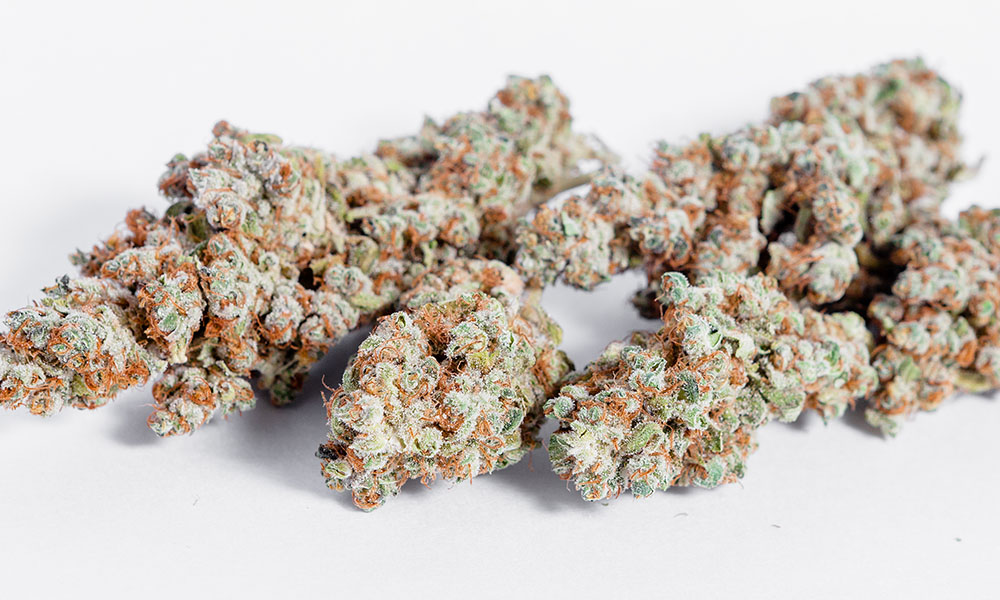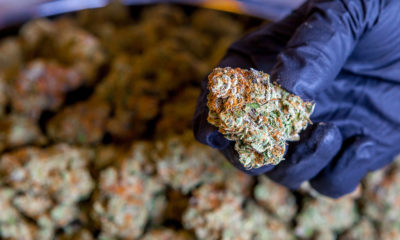
Politics
The 5 Biggest Moments in Cannabis Politics in 2019
After a year like this one, 2020 will likely include big changes in cannabis laws worldwide.
In the year 2019, we saw advances for cannabis freedom on both the national and global stage, as the political elbow room around the plant and its potential continued to expand.
However, we also saw some near-misses, from the state of New York to Mexico, which have left activists frustrated if no less determined. As advocates prepare to carry the fight into 2020, here’s an overview of what was achieved — or almost achieved — over the past 12 months.
1) Congressional Committee Holds Historic Vote on Legalization
On Nov. 20, Congress took a historic step when a cannabis legalization bill moved out of committee for the first time. In a 24-10 vote, the House Judiciary Committee passed the Marijuana Opportunity, Reinvestment, and Expungement Act (MORE Act).
The MORE Act would remove cannabis from the Controlled Substances Act, expunge federal cannabis convictions and establish a 5% excise tax on cannabis to fund various grant programs. While it doesn’t look likely that the MORE Act will get out of the seven other committees it’s been referred to or to a full House vote, it was still a notable first step for the cannabis legalization movement.
Months before, on July 10, lawmakers on Capitol Hill held a hearing on cannabis legalization and the legacy of the War on Drugs that advocates also hailed as historic, because it was the first time that Congress had openly discussed the topic.
The hearing, convened by the House Judiciary Subcommittee on Crime, Terrorism and Homeland Security, took more than two hours of expert testimony on the social ills associated with cannabis prohibition and why it must end.
Numerous lawmakers openly embraced lifting the federal strictures on cannabis and even outright legalization. The question was especially discussed in terms of recognizing and correcting the racial and social injustices associated with cannabis prohibition.
2) USDA Implements Hemp Regulations, But FDA Keeps CBD in a Gray Area
Hemp and hemp-derived CBD were officially legalized under the 2018 Farm Bill, signed into law exactly a year ago today. But over the course of 2019, the federal government both rolled hemp farming regulations and created uncertianty in the CBD industry by delaying regulations for the popular cannabinoid.
On Oct. 29 of this year, the U.S. Department of Agriculture released interim regulations on hemp farming, with a 60-day public comment period to follow before they take effect. This means a final rule will likely be in place in time for the 2020 planting season.
The establishment of the USDA’s “Domestic Hemp Production Program” will help all farmers who want to grow the crop, making them eligible for federal aid packages. But it is particularly critical for the indigenous peoples of the United States. While most farmers could at least legally operate under state regulations for hemp cultivation, would-be growers on Native American reservations had to wait on the issuance of federal regulations. This means they were effectively barred from growing hemp in spite of the change to federal law. Now, the federal bureaucracy has finally caught up with the federal legislation passed by Congress and signed by the president a year ago — but not entirely.
On the other hand, the U.S. Food & Drug Administration failed to promulgate regulations for use of legal hemp-derived CBD as an additive or ingredient in 2019. FDA Commissioner Scott Gottlieb unexpectedly announced his resignation in March, leaving the status of CBD under the agency’s regulations as unfinished business. This came just after members of Congress had officially written the agency to express their impatience on the matter.
On May 31, the FDA held a hearing where a slew of experts testified on CBD, but the agency made no action afterward. Since then, the FDA has not put forth any rules about how CBD can be used. Instead, it has only issued dark but dubious warnings about potential liver damage from CBD — not just once, but twice. It also continued to send out warning letters to CBD companies who made health claims about the cannabinoid.
3) A Near-Miss in New York, Plus Limited State Progress
It was a bittersweet moment when a long-hoped-for cannabis legalization bill officially died in the New York state assembly on June 19. Years of effort by activists and (more recently) state legislators to pass the Marijuana Taxation & Regulation Act, or MRTA, came to an anti-climactic end. However, reform advocates got a consolation prize as lawmakers agreed to widen decriminalization in New York state (from one ounce to two) and to expunge thousands of low-level cannabis convictions.
In March, similar news was reported from Hawaii, where a measure to legalize cannabis died in the state legislature. But Hawaii’s long-delayed medical marijuana program is finally taking off — and has now been opened to non-residents (particularly critical in a state with a huge tourism industry).
Successful passage of less ambitious legislation came in April, when New Mexico’s governor signed into law a cannabis decriminalization measure, as well as another bill that expanded social space for medical marijuana users. A real if still limited victory was also seen in Nebraska in May, when a bill was passed to significantly reduce cannabis penalties. Cornhusker activists call it a “quasi-decriminalization,” and are launching a new effort to get a legalization initiative approved in the 2020 elections.
Progress was also seen in U.S. offshore territories. The governor of Guam in April signed into a law a cannabis legalization measure — although actually establishing a legal market still faces opposition from local conservatives. The U.S. Virgin Islands in January passed a medical marijuana law that allows home cultivation for qualifying patients. Basking in victory, the territory’s activists still anticipate protection of sacramental use by Rastafarians — and general legalization
4) Countries Race to Become the 3rd With Legal Cannabis
In late October, Mexico’s Congress won a six-month extension from the country’s Supreme Court to pass a cannabis legalization act. This came almost exactly a year after the high court’s historic decision finding that cannabis prohibition is unconstitutional. The deadline for Congress to change the law has been repeatedly extended, dashing hopes that Mexico would become the world’s third country to formally legalize (after Uruguay and Canada) in 2019. It does seem set to happen in 2020, however, and foreign capital is already eyeing Mexico’s emergent legal cannabis sector. Mexico would represent the biggest cannabis market among countries that have legalized, by far.
Mexico is now racing with New Zealand for the world cannabis legalization third-place prize (in terms of chronology, not the establishment of the market, as Mexico looks set to win that race). Aotearoa (as the Pacific archipelago nation is known to its indigenous Maori inhabitants) is waiting on a promised cannabis legalization referendum to be held in 2020. Meanwhile, a domestic industry is starting to blossom, with big capital inflows reported.
Progress, short of outright legalization, was seen elsewhere around the world. In February 2019, the United Kingdom imported its first shipments of medicinal cannabis products from Canada, and its first shipment of bulk herbaceous cannabis, from the Netherlands.
In Israel, cannabis exports were approved by the cabinet in January. And in the country’s April elections, legalization was aggressively taken up as a campaign plank by the far right (a development that might have seemed unlikely to the pot-smoking peaceniks of yesterdecade).
5) The Vaping Health Scare Shakes Up Industry
This year has seen a disturbing nationwide outbreak of lung injuries, some fatal, which researchers link to vaping — either of tobacco products or illicit cannabis concentrates. A key moment came on Sept. 6, when the FDA issued a statement naming a likely chemical culprit in the mysterious outbreak: vitamin E acetate. This is simply a liquid oil form of the vitamin and is widely used in skin-care products. Inhaling it, however, appears to carry serious hazards. The wave of illnesses has promoted a regulatory crack-down on the vaping industry.
The federal Centers for Disease Control reported that as of Nov. 20, they had registered 2,290 cases of what is being called “e-cigarette or vaping associated lung injury” (EVALI), with 47 fatalities.
However, prohibitionists attempting to exploit the crisis as propaganda against cannabis legalization have got things precisely backwards. There is still nothing within cannabis itself that can kill people. Additives like vitamin E acetate, however, are often added to cannabis extract by unscrupulous vape pen producers who peddle to the illicit market in states where cannabis remains illegal. Greater clarity on this point could help propel the legalization effort from coast to coast in 2020.
TELL US, what do you think was the most important moment in cannabis politics this year?























